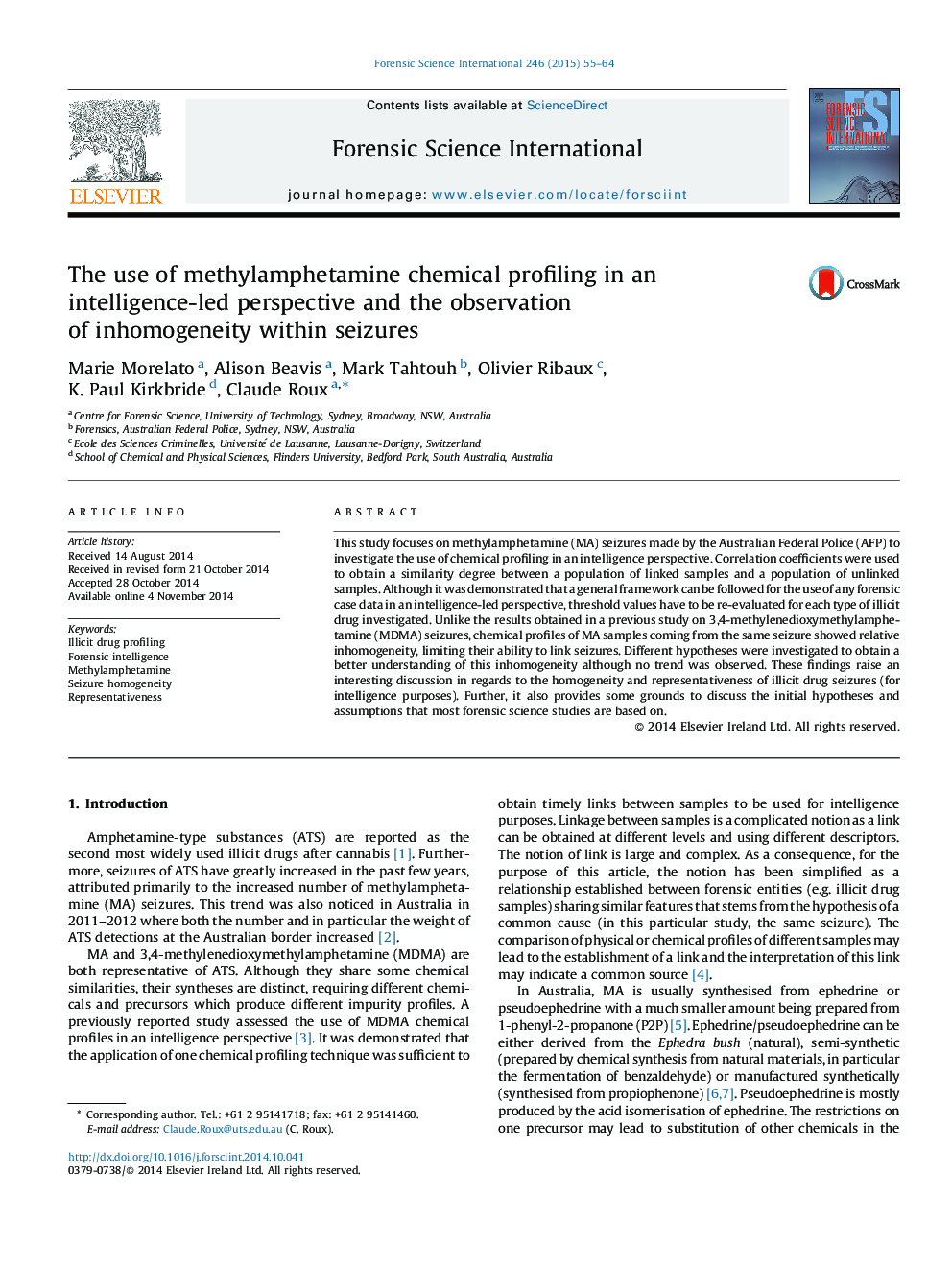| Article ID | Journal | Published Year | Pages | File Type |
|---|---|---|---|---|
| 95535 | Forensic Science International | 2015 | 10 Pages |
•A general framework can be followed in an intelligence-led perspective.•Threshold values have to be re-evaluated for each type of illicit drug investigated.•Chemical profiles of MA samples from the same seizure showed inhomogeneity.•Homogeneity and representativeness of illicit drug seizures are discussed.•Significance of the absence of trend is highlighted.
This study focuses on methylamphetamine (MA) seizures made by the Australian Federal Police (AFP) to investigate the use of chemical profiling in an intelligence perspective. Correlation coefficients were used to obtain a similarity degree between a population of linked samples and a population of unlinked samples. Although it was demonstrated that a general framework can be followed for the use of any forensic case data in an intelligence-led perspective, threshold values have to be re-evaluated for each type of illicit drug investigated. Unlike the results obtained in a previous study on 3,4-methylenedioxymethylamphetamine (MDMA) seizures, chemical profiles of MA samples coming from the same seizure showed relative inhomogeneity, limiting their ability to link seizures. Different hypotheses were investigated to obtain a better understanding of this inhomogeneity although no trend was observed. These findings raise an interesting discussion in regards to the homogeneity and representativeness of illicit drug seizures (for intelligence purposes). Further, it also provides some grounds to discuss the initial hypotheses and assumptions that most forensic science studies are based on.
